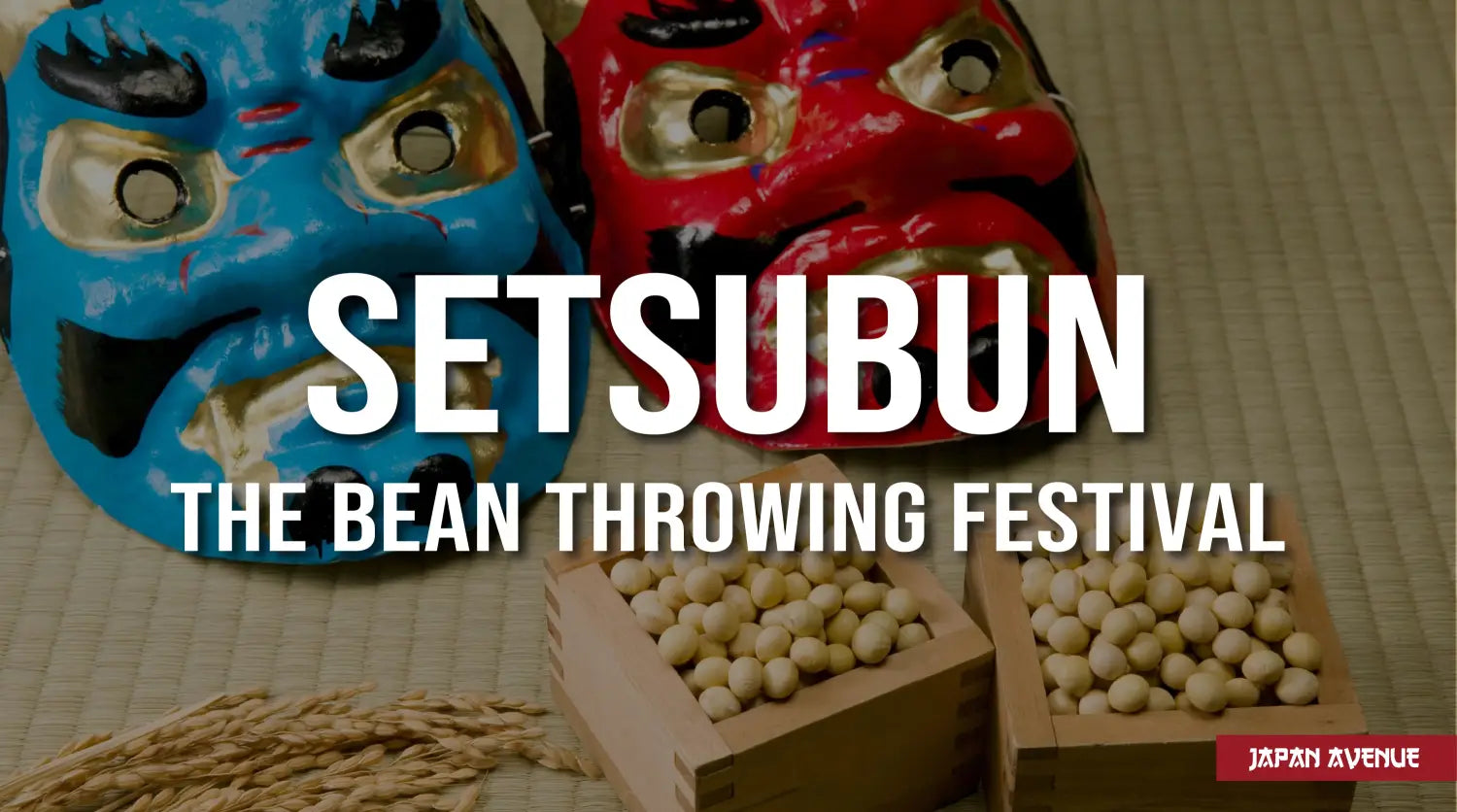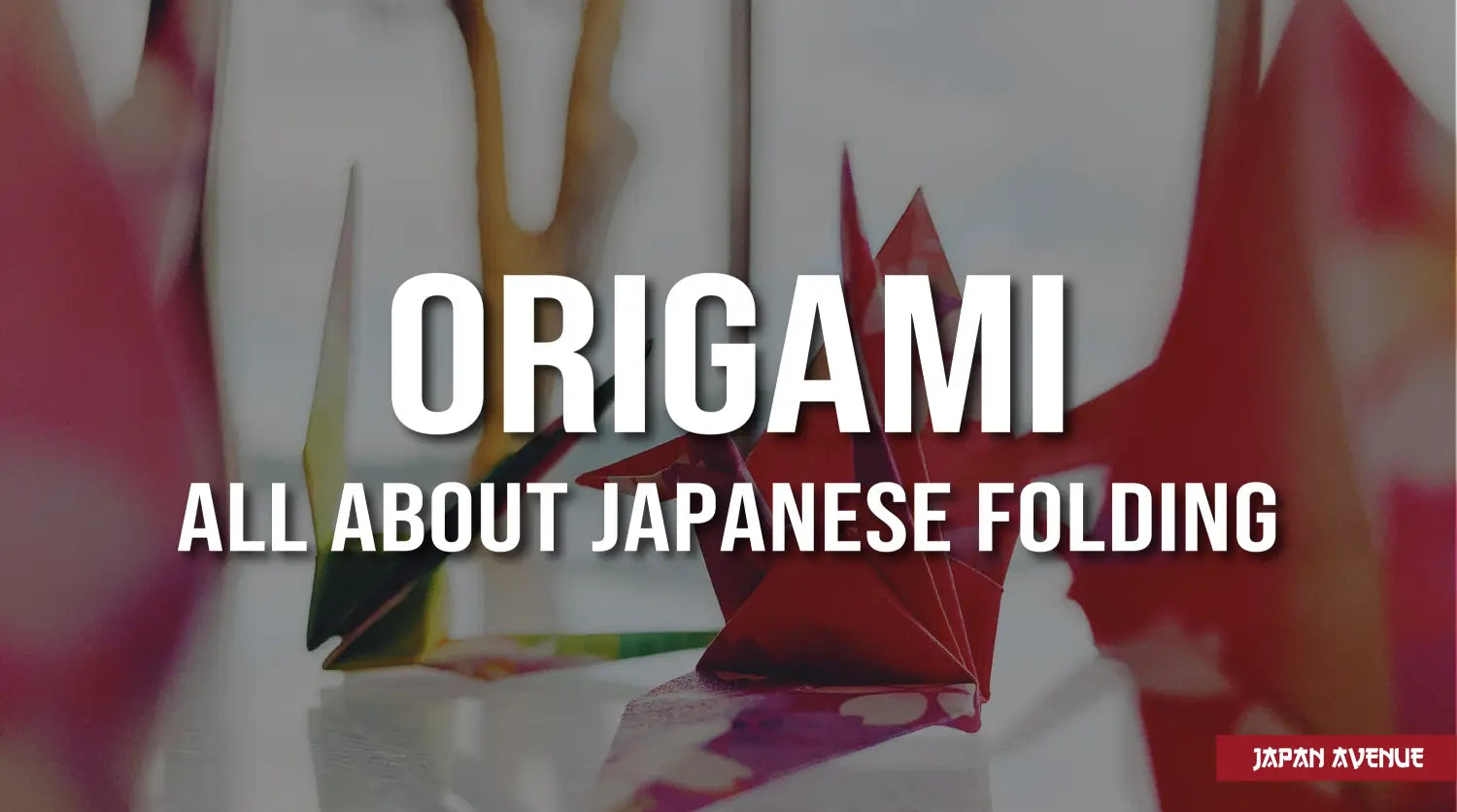In Japan, some festivals are not to be missed. This is the case of the Setsubun festival which greatly amuses children as well as adults! During this special day, which marks the passage from winter to spring, the Japanese celebrate the new season.
Demon hunting, lucky maki... discover the strange traditions of Setsubun and the folklore that goes with it.
🌱 On February 3, we celebrate the arrival of spring
Each year in Japan, the Setsubun matsuri announces the arrival of spring and the beginning of the new year, according to the ancient lunar calendar. This traditional Japanese festival, known for its bean tossing, takes place on the last day of winter. It usually takes place on February 3rd, but it can vary by one day depending on the position of the stars. On this date, risshun (the beginning of spring) is celebrated and the people look forward to this period of renewal when plum trees bloom. The streets are haunted by evil creatures known as oni that frighten children. The neighborhoods are animated with processions, dances and other folkloric rituals around the places of worship. Every year, the Setsubun tradition is to chase away demons and invite happiness at home. It is also the occasion to wish good health to your family and friends.

🏹 Setsubun, a festival to chase away demons
Oni are demons from Japanese folklore that look like ogres coming from the underworld. These ugly creatures are said to be the cause of many ills such as diseases and disasters that torment humans. And with the arrival of spring, the oni return to the surface...
The tradition of mame-maki
Demon hunting is a custom that originated from a folk tale and a play on words. This ritual is called mame-maki "soy bean throwing". Now, 豆 "mame" is pronounced the same as the kanji 魔目 and 魔滅 which respectively mean "demon" "eye" and "demon" "destruction". The concept? Sweep away evil spirits that want to enter the house and attract good fortune to the home.
To do so, the Japanese throw bean seeds through the window or inside the house. These beans would have the power to destroy the horrible creatures. At the same time people pronounce the magic formula "Oni wa soto! Fuku wa uchi!" : "Out with the demons! Inside happiness!". Thus, the evil forces and bad things of the past year disappear, leaving room for the positive.
As the Setsubun festival approaches, the kombini are filled with oni masks and lucky bean bags (fuku-mame) of all sorts in preparation for the ceremony. On the day of the ceremony, the beans are roasted and placed in a square shaped wooden box to be used as "ammunition" for the hunters before being eaten.
On this occasion, the father of the family, or another volunteer, wears an oni mask in order to play the role of the demon. He is chased away by the children with roasted soybeans (mame). Afterwards, everyone eats the same number of beans as their age and sometimes one more as a precaution. This tradition ensures health and luck for the next twelve months.

🐟 Fish to ward off demons
Other rituals are used to ward off demons. In some areas, people hang a holly garland with an Iwashi fish head on their door. This sharp, smelly talisman is great for warding off demons, but not only 😉
⛩ Celebrating Setsubun in a temple or shrine
On the day before spring, temples and shrines organize traditional ceremonies for Setsubun. On the occasion of mame-maki, some invite celebrities such as sumo wrestlers, maiko (geisha apprentices) or idols to throw blessed beans and other prizes on the crowd. The festivities continue with traditional dances, bonfires and other folk rituals. Of course, oni demons invade the place, much to the delight of children. In Tokyo, do not miss the ceremony of the Senso-ji or Zojo-ji temples! In Nara, visit the Kasuga Taisha shrine for the Setsubun Mantoro. Lastly, in Kyoto, the Yoshida-jinja Shinto shrine as well as the Mibu-dera and Rozan-ji temples offer a festive atmosphere.
🍀 Ehomaki tradition for good luck

During the Setsubun festival, demon hunting is not the only tradition that punctuates the day. In the evening, it is customary to eat an ehomaki, a kind of futomaki from Osaka, known to bring good luck. But be careful, for the magic to work, you have to follow some rules. First of all, ehomaki must be composed of 7 ingredients in order to honor the 7 gods of happiness Shichifukujin.
Then, this long rolled sushi must be oriented in a precise direction (eho), determined by the signs of the Chinese zodiac. Finally, the maki must be eaten in its entirety without speaking. Don't forget to make a wish while enjoying this delicious traditional dish.
🙋♂️ How to make ehomaki?
You need vinegared rice and seven ingredients of your choice. This can be avocado, cucumber, carrots, spinach, mushrooms, omelet, shrimp, or whatever you like. The food is raw or cooked in a sauce made of soy, sugar, sake and mirin before being rolled with rice in a sheet of nori seaweed.
Ehomaki is not the only dish that is eaten on spring eve. In some areas you can eat setsubun soba (buckwheat noodles), grilled sardines setsubun iwashi or other gourmet specialties prepared for the occasion.
🇨🇳 The origin of Setsubun festival

Oni chased by bean throwing, by Hokusai. Source: wikipedia
In the past, Setsubun was a Chinese festival introduced by the nobles of the imperial court in the early Heian period. During this celebration known as tsuina, people used to shoot with a bow or exorcise demons by throwing beans. Setsubun took its current form in the Muromachi period before becoming popular during the Edo period thanks to a famous tale in which an oni is annihilated by a bean throw.
In the Land of the Rising Sun, Setsubun 節分 means "season division". The name comes from the bamboo knots that evoke the passage of the seasons in Japanese culture. According to a belief, evil spirits are more present during the change of seasons, a time when people often get sick. So they are chased away the day before this turning point to start a new cycle on a good basis. Originally, there was a ceremony for the four seasons: autumn, winter, spring and summer but only the celebration of the day before the risshun has been kept. Nowadays, Setsubun is celebrated in families and in public places such as temples, shrines or schools, to the delight of all.

Source: Wikipedia
Setsubun in Japan is a bit like Candlemas which symbolizes the end of winter. On this non-holiday, traditions are perpetuated and good things are enjoyed. How about taking the opportunity to get rid of your old demons, according to the bean throwing method?



